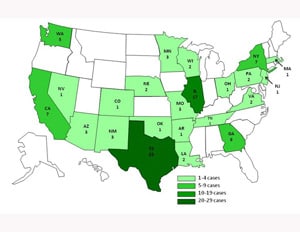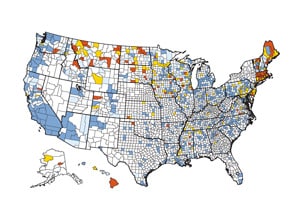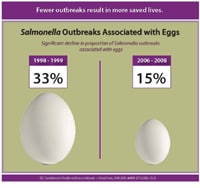Snapshots of Salmonella Serotypes
Information on this page is related to An Atlas of Salmonella in the United States, 1968–2011.
Each year in the United States, salmonellosis is estimated to cause more than 1.2 million illnesses, 23,000 hospitalizations, and 450 deaths. Salmonella infections most often cause gastroenteritis, which can range from mild to severe. Invasive Salmonella infections are rare; but can be severe and life-threatening.
Salmonella have many different serotypes. By identifying the structures on the bacteria’s surfaces, scientists can classify the many types of Salmonella into serotypes. Each has a unique history. The different serotypes can behave differently in how often they sicken people, when and where people get sick, and what foods or other sources they contaminate. Serotype infections are considered invasive when the Salmonella is isolated from blood or another part of the body that usually has no bacteria in it at all.
Since the 1960s, public health scientists in the US have used serotyping to help find Salmonella outbreaks and track them to their sources.
An Atlas of Salmonella [PDF – 248 pages] is the first-of-its-kind report that charts over 40 years of laboratory-confirmed surveillance data on 32 Salmonella serotypes. The Atlas is available to download in its entirety or in 32 individual Salmonella serotypes reports.
These snapshots highlight five Salmonella serotypes, their history, and some surprising facts.





